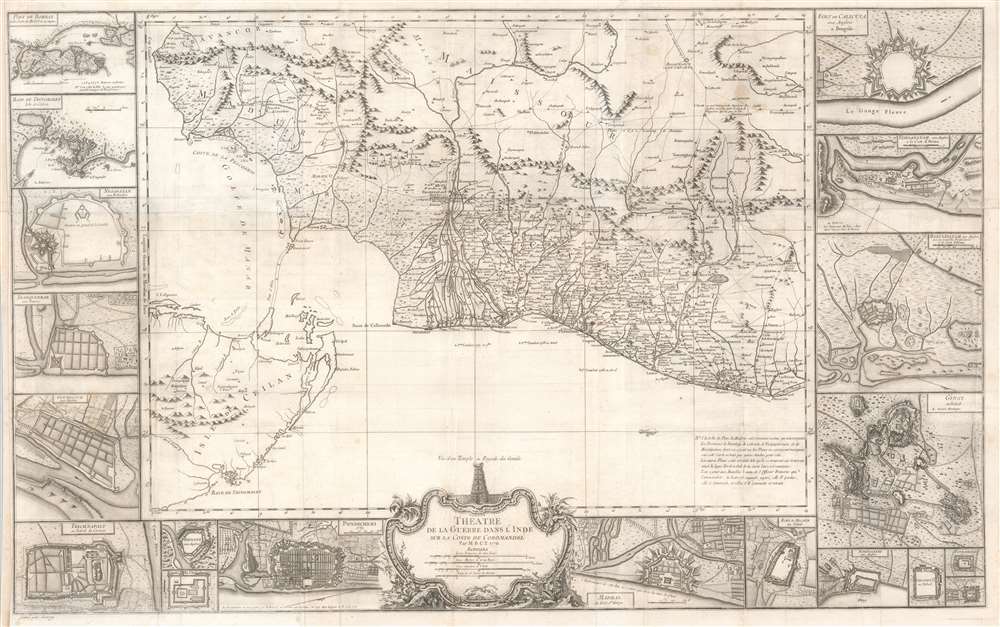
This item below is out of stock, but another example (left) is available. To view the available item, click "Details."
Details
1770 Croisey Map of the South Indian Seat of War Between England and France
$2,250.00
1770 Croisey Map of the South Indian Seat of War Between England and France
TamilNadu-croisey-1770
Title
1770 (dated) 22.75 x 37 in (57.785 x 93.98 cm) 1 : 100000
Description
Proxy Wars
Beginning as an offshoot of the War of the Austrian Succession and extending through the Seven Years’ War, England and France fought in a series of conflicts throughout India. The central and deciding regional fights would all fall in the south, within the bounds of this map. Direct battles between the European powers were rare: the fighting was largely characterized by small, disciplined and technologically superior European forces employed to shift the balance of forces in local power struggles. Key battles are shown on the map and dated. Those with a French commander present are noted with that officer’s name, and a notation indicating the character of the fight: a French win, a French loss, or a draw.The Fortifications
Nineteen inset views detail the fortifications of cities at play during the conflict. Each includes a note indicating whose sphere of influence the city falls within (French, English, Dutch, Danish, or the Carnatic.) These include Cuddalore, Machilipatnam, Negapatam, Poonamallee, Pondichéry, Bombay, Chingleput, Tranquebar, Tiruchirapalli, Wandiwash, Vishakhapatnam, Gingee, Calcutta, Arcati, Trincomalee, Divicoté, Madras, Carangouli, and the Pagoda of Chalembron. The source for these views is likely to be Bourcet, who was the chief French military engineer in Pondicherry, and to whom the overall map is generally attributed.Publication History and Census
This map was engraved and published in Paris, France by P. Croisey, liely based upon cartography provided by Paul Bourcet. The map is rare: We see examples catalogued only in the British Library, the Sachische Landesbibliothek, the University of Bern, and the BNF. We see catalogue records for three examples of this map going back to 1994.CartographerS
P. Croisey (fl. c. 1765 – c. 1800) was a French line-engraver active in the 18th century. Croisey was based in Versailles, France and is best known for his fine portrait of Marie Antoinette, when Dauphiness. He also maintained a location on Rue Haute-Feuille, Pairs. One of his early trade cards survives in which he describes himself as a geographical engineer and engraver of civil and military architecture, topography, and geography. His wife, Madame Croisey was also an engraver, specializing in music and text. He died around 1800. More by this mapmaker...
Jean Claude Bourcet (August 15, 1732 - December 28, 1776) Was a French Officer and military engineer. Bourcet was born in Grenoble, France. He served as chief of fortifications in Pondichéry, the linchpin of France's colony in India during the Seven-Years' War. Bourcet died in Pondichéry. Learn More...

